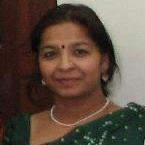International Journal of Image, Graphics and Signal Processing (IJIGSP)
IJIGSP Vol. 9, No. 1, 8 Jan. 2017
Cover page and Table of Contents: PDF (size: 835KB)
Transfer Subspace Learning Model for Face Recognition at a Distance
Full Text (PDF, 835KB), PP.27-32
Views: 0 Downloads: 0
Author(s)
Index Terms
Face recognition, Transfer subspace learning, KNN, independent and identically distributed
Abstract
Many machine learning algorithms work under the assumption that the training and testing data are drawn from the same distribution. However, in practice the assumption might not hold. Transfer subspace learning algorithms aims at utilizing knowledge gained in source domain to learn a task in target domain. The main objective of this work is to apply transfer subspace learning framework on face recognition task at a distance. In this paper we identify face recognition at distance as a transfer learning problem. We show that if the face recognition task is modeled as transfer learning problem, the overall classification rate is increased significantly compared to traditional brute force approach. We also discuss a data set which is unique and meant to advance this research. The novelty of this work lies in modeling face recognition task at distance as a transfer subspace learning problem.
Cite This Paper
Alwin Anuse, Nilima Deshmukh, Vibha Vyas,"Transfer Subspace Learning Model for Face Recognition at a Distance", International Journal of Image, Graphics and Signal Processing(IJIGSP), Vol.9, No.1, pp.27-32, 2017. DOI: 10.5815/ijigsp.2017.01.04
Reference
[1]Sinno Jialin Pan and Qiang Yang A Survey on Transfer Learning. IEEE Transactions on Knowledge and Data Engineering, 2010, vol 22, No 10.
[2]Si Si and Dacheng Tao Bregman Divergence –Based Regularization for Transfer Subspace Learning . IEEE Transactions on Knowledge and Data Engineering, 2010, vol22, No 7.
[3]M.Beklin, P.Niyogi and V.Sindhwani, Manifold Regularization: A Geometric Framework for Learning from Labeled and Unlabeled Examples. J.Machine Learning Research, 2006, 7:.2399-2434.
[4]B.Zadrozny Learning and Evaluating Classifiers under Sample Selection Bias. Proc.21st International conference on Machine Learning, 2004, 114-121.
[5]S.J.Pan, J.T. Kwok, and Q.Yang. Transfer Learning via Dimensionality reduction.Proceedings of 23rd national conference on Artificial intelligence, 2008, 677-682
[6]P.N.Belhumeurb, J.P Hespanha, and D.J.Kriegman. Eigenfaces versus Fisherfaces: Recognition Using Class Specific Linear Projection," IEEE Transaction Pattern Analysis and Machine Intelligence, 1997, 19:711-720
[7]P. J. Phillips, H. Wechsler, J. Huang, and P. Rauss. The FERET database and evaluation procedure for face recognition algorithms. Image Vis. Comput. J., 1998, vol. 16.5: 295–306.
[8]Stan Z.Li and Anil K,.Jain . Handbook of Face Recognition, second Edition.Springer.
[9]Desislava Boyadzieva George Gluhchev. Neural Network and KNN classifier for on line signature verification. Lecture Mnotes in Computer Science, 2014, 8897:198-206
[10]Ming Shao Dmitry Kit Yun Fu. Generalized Transfer subspace learning through low rank constraint. Int J Comput Vis. 2014, 109:74-93.
[11]Zheng Ming Ding, Ming Shao and Yun Fun, "Missing Modality Transfer Learning via latent low rank constraint" IEEE transactions on Image Processing, Nov 2015, vol 24, pp 4322-4334.
[12]Li Yang, Liping Jing and Michael K Ng, " Robust and Non-negative Collective Matrix Factorization for Text–to-Image Transfer Learning", IEEE transactions on Image Processing, Dec 2015, vol 24, No 12, pp 4701-4714.
[13]Zhaohong Deng, Yizhang Jiang, "Generalized Hidden-Mapping Ridge Regression, Knowledge-Leveraged Inductive Transfer Learning for Neural Networks, Fuzzy Systems and Kernel Methods", IEEE Transactions on Cybernetics, Dec 2014, vol 44, No 12, pp 2585-2599
[14]Teddy Salan, Khan M Iftekharuddin, "Large Pose Invariant Face Recognition using feature based recurrent neural network", International Conference on Neural Network, 2012, DOI:10:1109/IJCNN.2010.6252795
[15]H Ebrahim Pour- Komleh, V Chandran, S Sridharan, "Robustness to expression variations in fractal base face recognition", Sixth International Symposium on Signal Processing and its Applications, 2001, vol 1, pp 359-362
[16]Horst Eidenberger, "Illumination Invariant Face Recognition by Kalman Filtering", Proceedings ELMAR 2006, DOI:10:1109/ELMAR.2006.329517
[17]M.S.Shashi Kumar, K.S.Vimala, N.Avinash, "Face Recognition distance estimation from a monocular camera", IEEE conference on Image Processing, 2013, DOI 10:1109/ICIP.2013.6738729
[18]Fisher RA, "The use of multiple measurements in taxonomic problems, Ann Evgen, 7(2), 1936, pp 179-188
[19]He X, Niyogi P, "Locality preserving projections", Advanced Neural Information Processing System, 2003, pp 16:1-8
[20]Belhumeur p, Hespanha J, Kriegman D, "Eigenfaces vs fisher faces: recognition using class specific linear projection, IEEE Trans Pattern Analysis and Machine Intelligence, 1997, 19(7), pp 711-720


